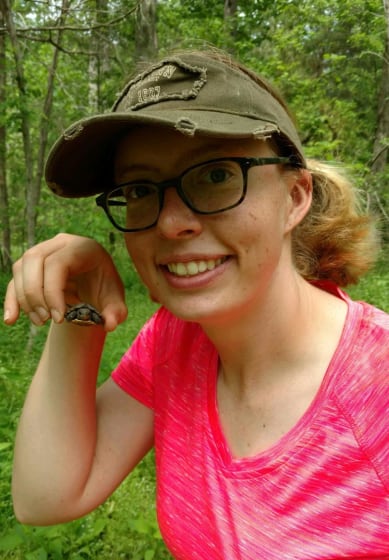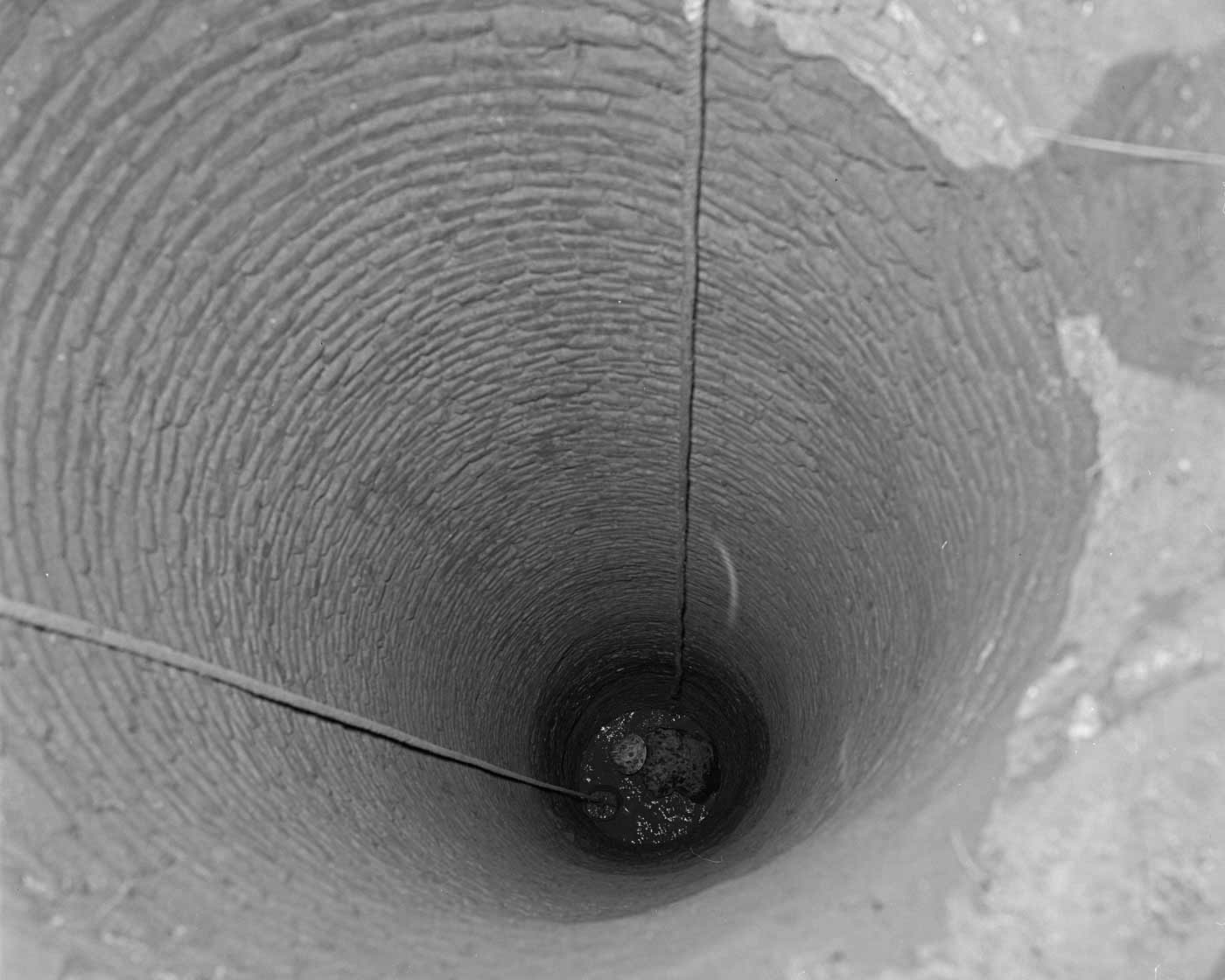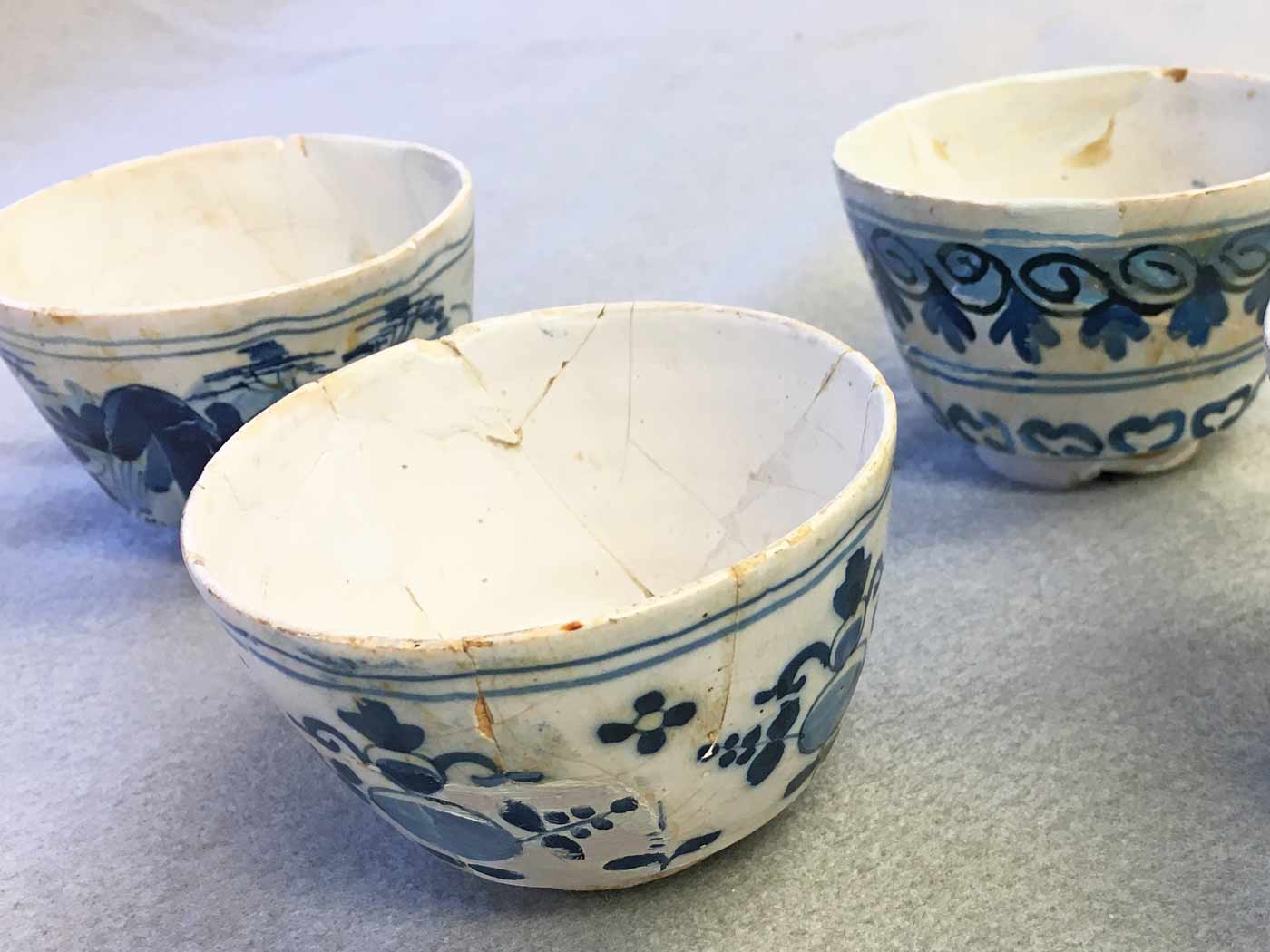A look at these artifacts from the Well at Custis Square

My name is Victoria Gum. As a field technician at Colonial Williamsburg, I spend most of my time excavating at Custis Square. I am very interested in colonial ceramics, especially ceramics from the early 18th century, and what they can tell us about the people who owned and used them in the past. The 1960s excavations at Custis Square recovered many beautiful pieces from the John Custis IV occupation, and I have recently been given the opportunity to conduct research into a few special artifacts. I have chosen to focus my research on the five delftware teabowls recovered at Custis Square in the 1960s.

Archaeologists, in 1964, recovered fragments of English delftware teabowls from a post-1740 context in Well B, the 40-foot well that supplied water for the property’s residents and lansdscape. These pieces formed five different vessels, four of which were nearly complete. These teabowls were hand-painted in three chinoiserie designs. One was decorated with a landscape scene, two with bands of abstract spirals and scrolls, and two with floral sprays (Figures 1 and 2). To understand the importance of these vessels, we need to look at them in their historical context.

Delftware, a soft-bodied earthenware with a thick, opaque tin glaze, originated in the Netherlands in the early 16th century. By the 1560s, it was also being produced by potters in England. The English delft industry flourished and, thanks to the Navigation Acts of the mid 17th century, became very popular in colonial America. Archaeologically, delftware is very common on sites from the first settlement at Jamestown through the end of the 18th century.
Many different types of vessels were made from delftware, including apothecary jars, fireplace tiles, chamber pots, tablewares, and teawares. All of these are commonly found archaeologically, but once recovered they are difficult to date. Unlike other earthenwares, whose ceramic fabric and glaze varied greatly over time, the materials used for delftware remained remarkably similar for centuries. Delftware is best dated not by material but by vessel form and decorative motif, and the best source of information about these attributes is non-archaeological material in museums and private collections.
To date the Custis teabowls, I broke their designs into components and looked for dated vessels that shared those features. I studied catalogs of English delftware collections at Colonial Williamsburg, the Rijksmuseum, the Victoria & Albert Museum, the Fitzwilliam Museum, and several extensive, private collections and identified 97 vessels that shared design characteristics with the Custis teabowls. Of these, only two were teabowls. This was to be expected; delftware's heavy glaze does not bond to the clay body during firing, and when a vessel is heated or cooled excessively, the glaze often cracks and flakes away. Teabowls like those from the Custis well would be damaged every time they were filled with hot tea.
Analyzing Decorative Features

Based on my analysis of the decorative elements included on each teabowl (Table 1), the three recovered from the Custis well appear to have been most popular in the 1730s and 1740s. This suggests that they were purchased by John Custis IV while he was living at Custis Square. The next question is what these vessels were used for. It may seem obvious — they are teabowls, so they must have been used to drink tea. This may indeed be the case. An inventory of everything in the Custis house after Daniel Parke Custis’ death in 1757 shows that tea-taking equipment was present in the Custis household. The inventory lists tablecloths, a tea board, and “1 old Tea Chest [and] 1 Cannister” as well as “8 Small China Bowles, 29 Saucers, [and] 25 Cups.” All of these, along with a tea table, cream and sugar containers, teaspoons, tongs, and a slop bowl, would have been necessary to take tea in the 18th century. Interestingly, the teawares in this inventory were described as china rather than earthenware (although “A parcel of China and Earthen ware” is also listed).

As mentioned previously, delftware was not ideal for the consumption of hot beverages. Perhaps the vessels listed in the inventory replaced the delftware teabowls later recovered from the well. Or perhaps the delft bowls served another purpose. They could have been for display only, to appear from a distance to be more expensive porcelain. More interestingly, Custis may have used these teabowls in the preparation or application of his medicinal remedies.
John Custis IV was an amateur physician who compiled a Commonplace Book of 182 remedies to treat ailments from heartburn and bedwetting to dysentery and deafness (for more information, see our recent post about the 52-letter word). He references a teacup once in the Commonplace Book; to cure the “bite of A mad Dog,” he prescribes musk and cinnabar mixed into a teacup of arrack, a type of spirit from the East Indies. Although this is the only specific mention of a teacup or teabowl, there are many recipes that were to be taken as a tea, infusion, or decoction. Instead of (or in addition to) social tea drinking, the Custis teabowls could have been used in the application of medical treatments for colic, asthma, epilepsy, miscarriage, gonorrhea, or several other afflictions.
Regardless of their purpose in the past, these teabowls are an interesting piece of the history of Custis Square. I am enjoying this research and look forward to discovering and sharing more about these vessels!
Victoria Gum graduated from William & Mary in 2016. She has worked at Colonial Williamsburg in the past and most recently worked as an archaeologist with the Fairfield Foundation.
